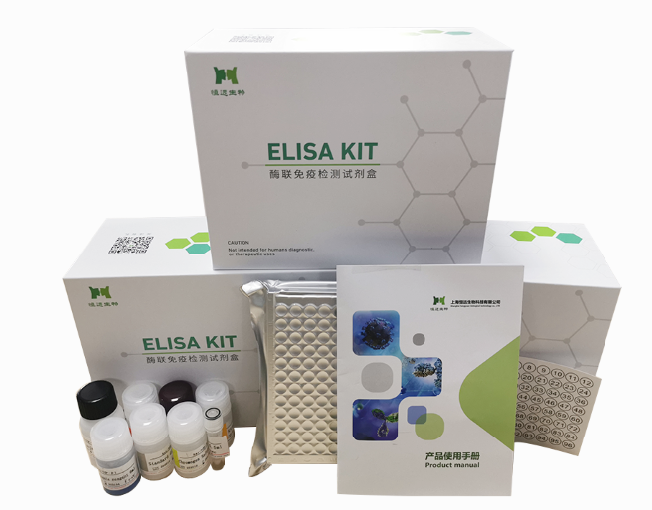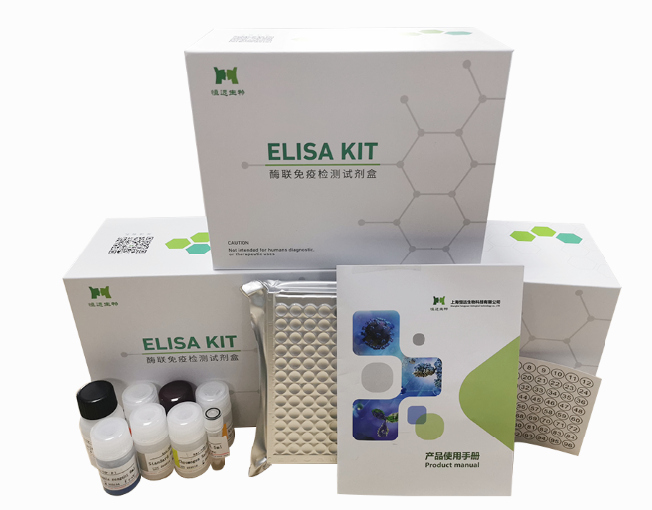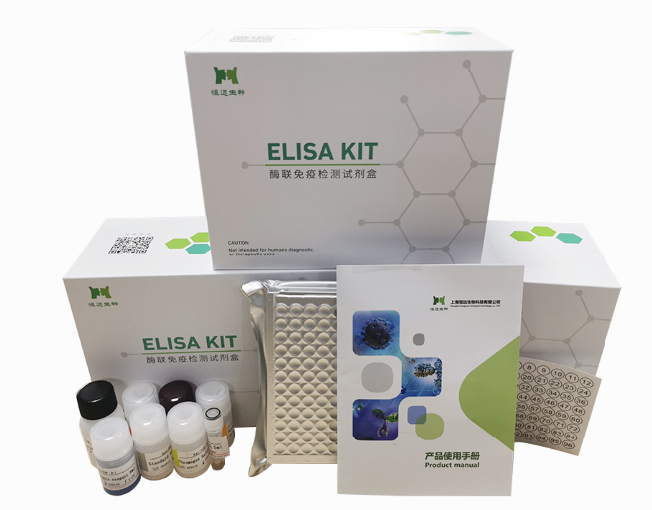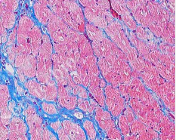Rabbit TNF-αFOR RESEARCH USE ONLY
Assay range:3 pg/ml -800 pg/ml 96 determinations
Purpose
This kit allows for the determination of TNF-α concentrations in Rabbit serum, cellculture supernates and other biological fluids
Principle of the assay
The kit assay Rabbit TNF-α level in the sample, use Purified Rabbit TNF-α antibody tocoat microtiter plate wells, make solid-phase antibody, then add TNF-α to wells, CombinedTNF-α antibody which With HRP labeled, become antibody - antigen - enzyme-antibodycomplex, after washing Completely, Add TMB substrate solution,TMB substrate becomes bluecolor At HRP enzyme-catalyzed, reaction is terminated by the addition of a sulphuric acidsolution and the color change is measured spectrophotometrically at a wavelength of 450 nm.The concentration of Rabbit TNF-α in the samples is then determined by comparing the O.D. ofthe samples to the standard curve.
Materials provided with the kit
1 wash solution 20ml×1bottle 7 Stop Solution 6ml×1 bottle
2 HRP-Conjugate reagent 6ml×1 bottle 8
Standard
(1600pg/ml)
0.5ml×1 bottle
3 Microelisa stripplate 12well×8strips 9 Standard diluent 1.5ml×1bottle
4 Sample diluent 6ml×1 bottle 10 Instruction 1
5 Chromogen Solution A 6ml×1 bottle 11
Closure plate
membrane
2
6 Chromogen Solution B 6ml×1 bottle 12 Sealed bags 1
Specimen requirements
1. extract as soon as possible after Specimen collection,and according to the relevantliterature, and should be experiment as soon as possible after the extraction. If it can’t,specimen can be kept in -20 ℃ to preserve, Avoid repeated freeze-thaw cycles.
2. Can’t detect the sample which contain NaN3, because NaN3 inhibits HRP active.
Assay procedure
1. Dilute and add sample:Dilute Original density Standard as follow table:
800 pg/ml 5 Standard 150μl Original density Standard+150μl Standard diluent
400 pg/ml 4 Standard 150μl 5 Standard+150μl Standard diluent
200 pg/ml 3 Standard 150μl 4 Standard+150μl Standard diluent
100 pg/ml 2 Standard 150μl 3 Standard +150μl Standard diluent
50 pg/ml 1 Standard 150μl 2 Standard +150μl Standard diluent
2.add sample : Set blank wells separately (blank comparison wells don’t add sample andHRP-Conjugate reagent, other each step operation is same). testing sample well. add Sampledilution 40μl to testing sample well, then add testing sample 10μl (sample final dilution is
5-fold), add sample to wells , don’t touch the well wall as far as possible, and Gently mix.
3.Incubate: After closing plate with Closure plate membrane ,incubate for 30 min at 37℃.
4.Configurate liquid: 30-fold(or 20-fold) wash solution diluted 30-fold (or 20-fold) with distilledwater and reserve.
5.washing:Uncover Closure plate membrane, discard Liquid, dry by swing, add washing bufferto every well, still for 30s then drain, repeat 5 times, dry by pat.
6.add enzyme:Add HRP-Conjugate reagent 50μl to each well, except blank well.
7.incubate:Operation with 3.
8.washing:Operation with 5.
9.color:Add Chromogen Solution A 50ul and Chromogen Solution B 50ul to each well, evadethe light preservation for 10min at 37℃
10.Stop the reaction : Add Stop Solution50μl to each well, Stop the reaction(the blue colorchange to yellow color).
11.assay:take blank well as zero , Read absorbance at 450nm after Adding Stop Solution andwithin 15min.
3
Steps description
Standard, Sample diluent
Add Standard, Sample diluent, incubate for 30 min at 37℃.
Wash 5 time,Add HRP-Conjugate reagent, incubate for 30 min at 37℃.
Wash 5 times,Add Chromogen Solution A and B, incubate for10 min at 37℃.
Add Stopp Solution
Read absorbance at 450nm within 15 min
calculate
Calculate
Take the standard density as the horizontal, the OD value for the vertical ,draw thestandard curve on graph paper, Find out the corresponding density according to the sampleOD value by the Sample curve, multiplied by the dilution multiple, or calculate the straight lineregression equation of the standard curve with the standard density and the OD value ,with the4sample OD value in the equation, calculate the sample density, multiplied by the dilution factor,the result is the sample actual density.
Important notes
1. The kit takes out from the refrigeration environment should be balanced 15-30 minutes inthe room temperature, ELISA plates coated if has not use up after opened, the plate shouldbe stored in Sealed bag.
2. washing buffer will Crystallization separation, it can be heated the water helps dissolvewhen dilute . Washing does not affect the result.
3. add Sample with sampler Each step, And proofread its accuracy frequently, avoids theexperimental error. add sample within 5 min, if the number of sample is much , recommendto use Volley .
4. if the testing material content is excessively higher (The sample OD is bigger than the firststandard well ),please dilute Sample (n-fold), Please diluente and multiplied by the dilutionfactor.(×n×5).
5. Closure plate membrane only limits the disposable use, to avoid cross-contamination.
6. The substrate evade the light preservation.
7. Please according to use instruction strictly, The test result determination must take themicrotiter plate reader as a standard.
8. All samples, washing buffer and each kind of reject should according to infective materialprocess.
9. Do not mix reagents with those from other lots.
Storage and validity
1.Storage: 2-8℃.
2.validity: six months
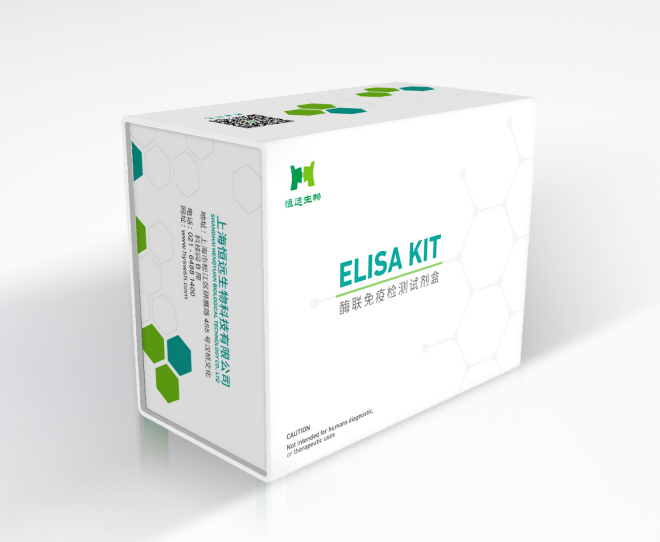
 (pdf)
(pdf) (doc)
(doc) (pdf)
(pdf) (pdf)
(pdf) (pdf)
(pdf) (pdf)
(pdf) (pdf)
(pdf) (pdf)
(pdf) (pdf)
(pdf) (doc)
(doc)


